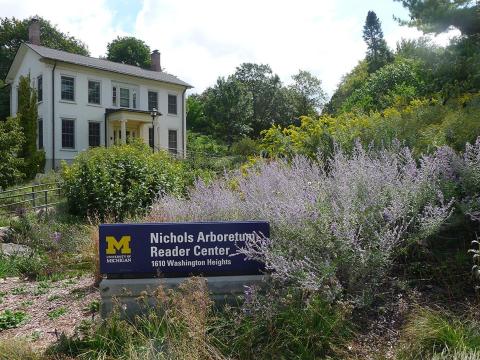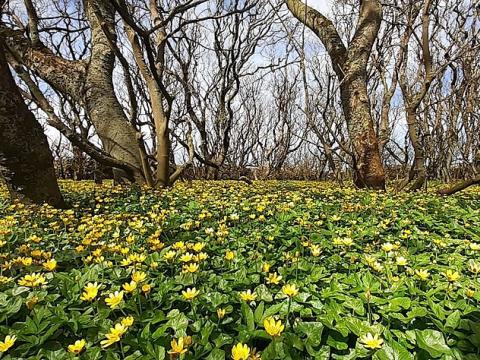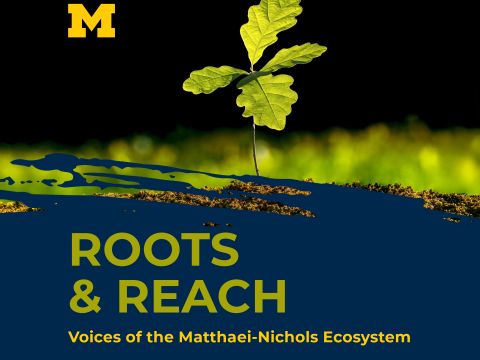Para leerlo en español, por favor haga click aquí
In 2023, En Nuestra Lengua (ENL), Jewish Family Services(JFS), and MBGNA secured a joint grant to create curriculum and communication for Spanish-speaking families. En Nuestra Lengua is a nonprofit organization that runs a Spanish Saturday school with the goal of enriching Spanish language literacy for elementary school children. Jewish Family Services is a nonprofit that offers social services for refugee families. A large portion of their clients are refugee families from Latin America. In her role as the program assistant, Ariana Bautista worked to create curriculum and events in a pilot program that served ENL and JFS families at MBGNA this summer.
What is your position through this grant at MBGNA, and the projects you are currently working on?
The main emphasis of this grant is to cater to Spanish-speaking families and to create a sense of place for these families in a location that would otherwise be very difficult to have that type of interaction and engagement. And to encourage and facilitate the connection that these families already intrinsically have with nature. One part of my role was to create content, including social media, newsletters, and resource info for these families, entirely in Spanish. And then also to create, with a sense of community, workshops that families and children could participate in. Some of these are similar to what's already established at MBGNA: guided tours of the conservatory and workshops on play, interaction, and engagement for children. The difference is that it's all being delivered in Spanish. It's one thing to have a little cheat sheet that's usually given to families in Spanish. But it's another to be explaining the instructions and actually engaging with the families in their native language.
And not only that, but also making content culturally relevant. So, taking it a bit further. For example, talking about the plants that we're seeing in the conservatory in a way that is connected to their culture back in Latin America. Snake plants, for example, in Western societies or in the US, are usually very ornamental. However, in a lot of Latin American countries, snake plant also holds a very medicinal purpose and is often used as an antivenom for snake bites and scorpion bites. But mentioning those things, right? Talking about what our families, perhaps back in their motherlands and mother countries, might use it for as well. It's that cultural relevance that's also very important.
I've also helped create a curriculum that is meant to span a year, and it parallels the curriculum from ENL, from their Saturday school. So, for example, when they had a week that focused on ponds, that's when we did the guided tour of the conservatory. In our curriculum, I focused a lot on the winter season simply because Michigan can be very dry and very harsh, and for a lot of folks who are used to warmer climates from Latin America, winters here can be a very drastic change. I wanted to not only create some activities for the winter but also show that it might be cold and it might look dead, but it's not, you know. There's a lot going on outside during the winter. So I’m in search of a Spanish-speaking ornithologist to do bird walks in winter. It might all be covered in snow, but the birds especially love coming out in the winter. I even think it's better to do bird walks in the winter because everything is amplified, and you can really hone in on what the birds are singing. But it's been really hard to find Spanish-speaking ornithologists. That also speaks volumes about the fact that there's not that much diversity in outside ecology and outside environmental play.
We've also been doing bi-monthly events that lead up to Hispanic Heritage Month, which runs from September 15 through October 15. At each of these events, families from ENL and JFS come out to the gardens to do different activities that will culminate in the creation of an altar at the end of Hispanic Heritage Month. The children have been doing crafts that they will then use to build the altar itself. They've planted marigolds, and they've been watching the stages of the marigolds from the seed to now blooming. They've also created little niches, sort of individualized boxes that they've decorated that, at the end, they will place on the altar. We also created little flags based on their mother countries. You sort of press the flowers and then seal them with that sort of Saran paper. We went to the gardens, we talked about the plants, and they were putting flowers with the colors from their flags. They had a really, really great time with that one.
What impact have you seen from the programming this summer?
So one of the things that I've been very intentional about is that the entire time I'm with the families during these events, and even the communication that I send out as reminders, has all been in Spanish. And through this, trying to create a sense that this is a very welcoming environment. That they are always always free to come in and explore and take advantage of the space that is being offered.
At one of the first events, we had a group of 8 families and about 12 children. And I asked them who had been to the gardens before. About half of them raised their hand, and then the other half I asked why they had never come. And a lot of them would say they didn't even know this space existed. So, every time we had an event, I would do a similar check-in. People would say, “Oh, we came here last week,” and not with any event that was hosted through this project, but on their own. And often, the children that would say this were the children that I noted had not known about the botanical gardens before. So they're feeling safe enough to come without my presence, without any sort of tailored activity.
And that's also ultimately the goal, that they don't need a program or sponsored event to feel comfortable enough to come. I always bring up the picnic areas that we have because I know a lot of Hispanic folks, we love picnics. And we love grilling outdoors or taking the family to the park. That's always been a very lasting memory from my childhood. We would go to the park, we would eat; we would run into other folks. Just that sense of community. And with all my friends who are also Hispanic and all folks and families that I have met over my years, it’s a shared experience. It's a shared memory that we all have, that we always go to parks right? We eat and sit and play in community. And then I have heard from children, “We came with my friends last week,” or “My parents brought me back, and then we had a picnic by the pond.” And that's always great to hear because, if anything, I'm doing one thing right.
What visions do you have for the future of programming and education at MBGNA?
There's a lot to be done. But we have to start somewhere, right? It doesn't have to be anything fancy; it can be as simple as having a volunteer to speak Spanish to help facilitate part of the programming in Spanish. And then, hopefully, not just Spanish, but other languages as well. I know southeast Michigan has a very strong community of folks from the Middle East and Northern Africa, and so also having different languages other than Spanish.
Because this project is a pilot program, we have focused only on ENL and JFS families. However, the goal of the project is to make it available to the general public. And shifting these events from being something that just happens at the Botanical Gardens to something that's coming from the Botanical Gardens itself. This year is the first time MBGNA is doing any type of activity around Hispanic Heritage Month. Hopefully, in the future years, it will grow bigger and more prominent, and people across different counties will be able to attend. Hopefully, it becomes so standard that it becomes second nature.
And with that, I also really hope that it never loses that sense of community because, obviously, this year, the children are the ones that are contributing to it. And they're the ones that are building it. For example, what is being placed on the altar and the way that it is being constructed is by the children. I know a lot of university departments have their own version, and they put out an altar. But I sometimes see that it's staff-built. With the one that we're doing at MBGNA, I was very intentional about having it be from the community and for the community. Also, all the signage around the event is going to be in Spanish. When I share this type of event with the families, they are definitely on board. They are happy to do it. They are excited about it.




